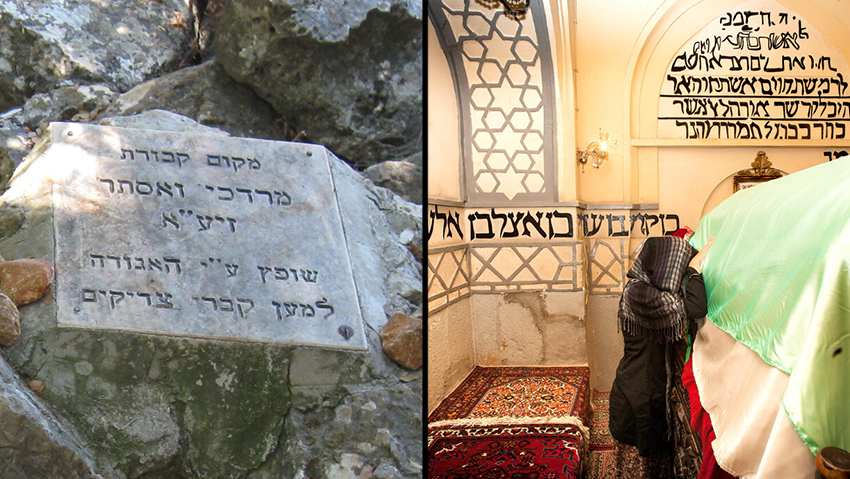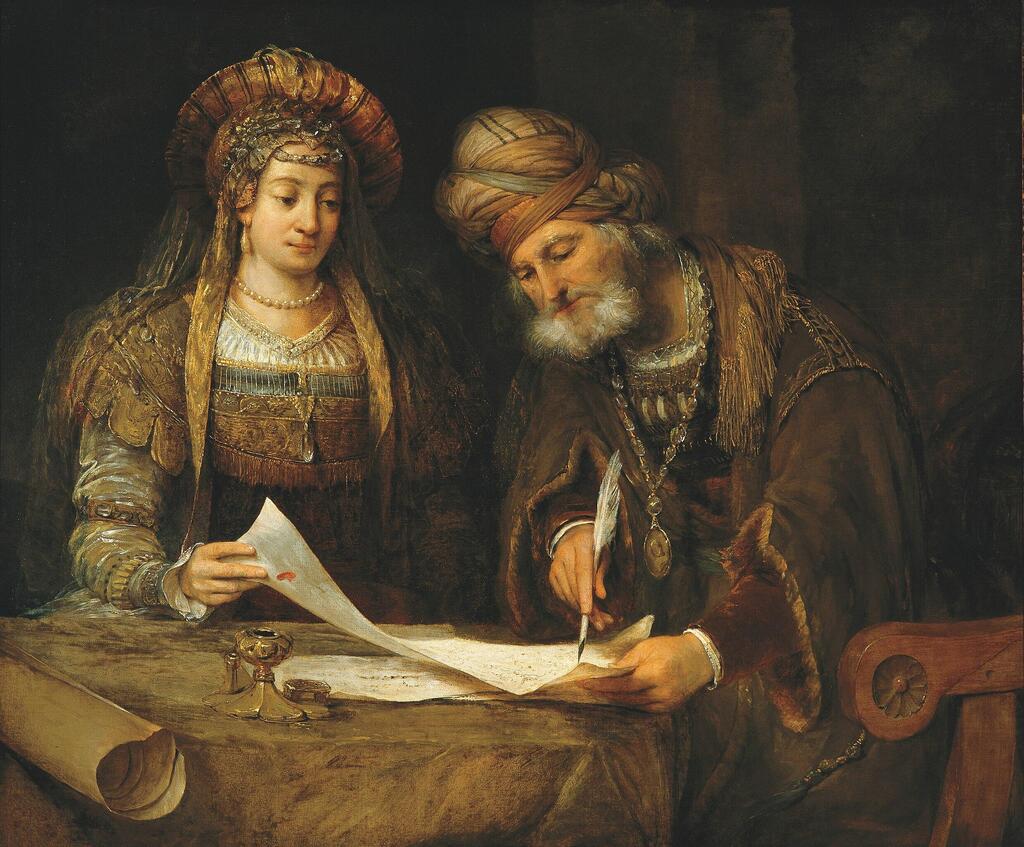“Go, assemble all the Jews…” (Esther 4:16)
Everyone thinks they know about Esther, the beautiful queen. But who was she really?
When she first appears in the megillah, Esther is an orphan with no mother or father, whose cousin has taken her in, a beautiful girl, obedient and shy. Throughout the megillah, she evolves from a young girl into a woman, and her obedience and shyness are replaced with the decisiveness of a leader.
Esther was brought to the Persian palace in Shushan (Susa); King Ahasuerus, regretting having his pretty wife Vashti killed, had asked his ministers to bring all of the beautiful women in the kingdom to him. When Esther arrived at the palace, she was transferred to Hegai, guardian of the women, and he liked her immediately. He gave her seven maids, and Midrash tells us that she named each of them for one day of the week so that she would not forget when it was Shabbat. Esther had promised Mordechai, her uncle, that she would not tell a soul that she was a Jew, and she was forced to keep Shabbat in secret.
When Ahasuerus met Esther he fell in love with her, put a crown on her head, and named her queen in Vashti’s place.
And Mordechai, her foster father, sat in the palace gates to watch her from nearby. When Mordechai and Esther wanted to pass messages to one another, they used Hathach, the personal servant that the king had given Esther.
One day Hathach reported to Esther that Mordechai was wearing sackcloth and ash. Esther was horrified: Had Mordechai lost his money? Perhaps he had no clothes? She sent him clothes, but he refused to accept them.
It was not poverty, Esther learned, that had made Mordechai wear sackcloth; he was wearing them as a sign of mourning. Haman, head of the king’s ministers, had decreed that the Jews in all of the king’s lands would be destroyed, massacred, and exterminated.
Go to the king, Mordechai commanded Esther, and ask him to have mercy on us.
It’s too dangerous, she answered. People who come to the king without being called are executed unless the king extends his scepter, and “I have not been summoned to visit the king for the last thirty days” (Esther 4:11).
But Mordechai took no pity on Esther; he would not leave her alone. Do not worry, he told her in a message that Hathach relayed. Even if you do not help, he told her, “Relief and deliverance will come to the Jews from another quarter” (Esther 4:14). But if you do not step up as part of the struggle, he stated, you and your family will disappear from Jewish history forever.
Suddenly, the roles were reversed: Esther, the young girl who was always controlled by those around her, became a leader, taking on responsibility and choosing the next steps in the struggle.

Israel or Iran? The quest after Esther and Mordechai's final resting place
“Go, assemble all the Jews,” she commanded Mordechai, who until that point had instructed her, “and fast on my behalf… My maidens and I will fast as well” (Esther 5:16). Mordechai internalized the change immediately: “And Mordechai… did just as Esther had commanded him” (Esther 5:17).
For three days, the Jews in Shushan fasted and prayed for her mission to succeed, and on the third day, Esther rose, put on her royal clothing, and went to meet the king. He was very happy to see her, extended his golden scepter, and asked her to tell him what was bothering her. But she - diplomatically - did not tell him right away; instead, she invited him and Haman to a feast, and then to a second feast. It was only at their third meeting that Esther told the king about the evil that Haman was plotting against her people.
When he heard about the catastrophe that could take away his beloved queen, the king was enraged and permitted Esther to do anything she felt necessary to rectify the situation. He instructed that Haman be hung along with his family members, reversed the decrees to kill the Jews, and demanded the annulment of the decrees in all of the king’s lands; the Jews were permitted to fight back against their attackers. A day of celebration was established by Esther and Mordechai, Purim - and the two of them, many believe, wrote the Megillah, or scroll, of Esther.
 Aliza LaviePhoto: Ronen Fadida
Aliza LaviePhoto: Ronen FadidaThe Talmud states that Esther’s greatest enterprise was writing the book of Esther. Esther, who was given the gift of prophecy, saw that the nation would be in a lengthy exile with no end in sight. Much like a person drowning at sea, the nation would need a life raft that it could hold onto, and the scroll was meant to be just that life raft. Esther wished to draw on her experience to teach her nation that even in the terrible event of a decree to “destroy and massacre” they must not give up, because the decree can be changed overnight.
Indeed, throughout history, women have relied on Esther’s character and drawn strength from it. There are a fair number of tes¬timonies about the crypto-Jews from Spain and Portugal who identified with Esther deeply; she, too, was made to hide her faith. These women would fast for three days on the Fast of Esther, endangering their lives, with the hopes that their fate would change, too.
Throughout history, Jewish women have served as leaders, changemakers, teachers, scholars, and revolutionaries. Their actions have made the world what it is today; their stories model for us how much can be accomplished when one has vision, determination, and courage.
 Iconic Jewish Women: Fifty-Nine Inspiring, Courageous, Revolutionary Role Models for Young Girls
Iconic Jewish Women: Fifty-Nine Inspiring, Courageous, Revolutionary Role Models for Young GirlsWhile celebrating Purin in Jerusalem today, Dr. Aliza Lavie - former Member of Knesset, scholar, entrepreneur, and activist - has released her latest book: Iconic Jewish Women. The book profiles 59 remarkable Jewish women who made their mark on history. Designed for Bat Mitzvah girls, parents and educators, Lavie includes questions for discussion, suggested activities that match each of the women's values, and tefillot (prayers) for the Bat Mitzvah ceremony.
Since the events of October 7th, Lavie has been at the forefront of helping families and young widows who have been directly affected by the war against Hamas. As such, she sees the vital importance of learning about the women of our past to strengthen our identities as Jewish women.



